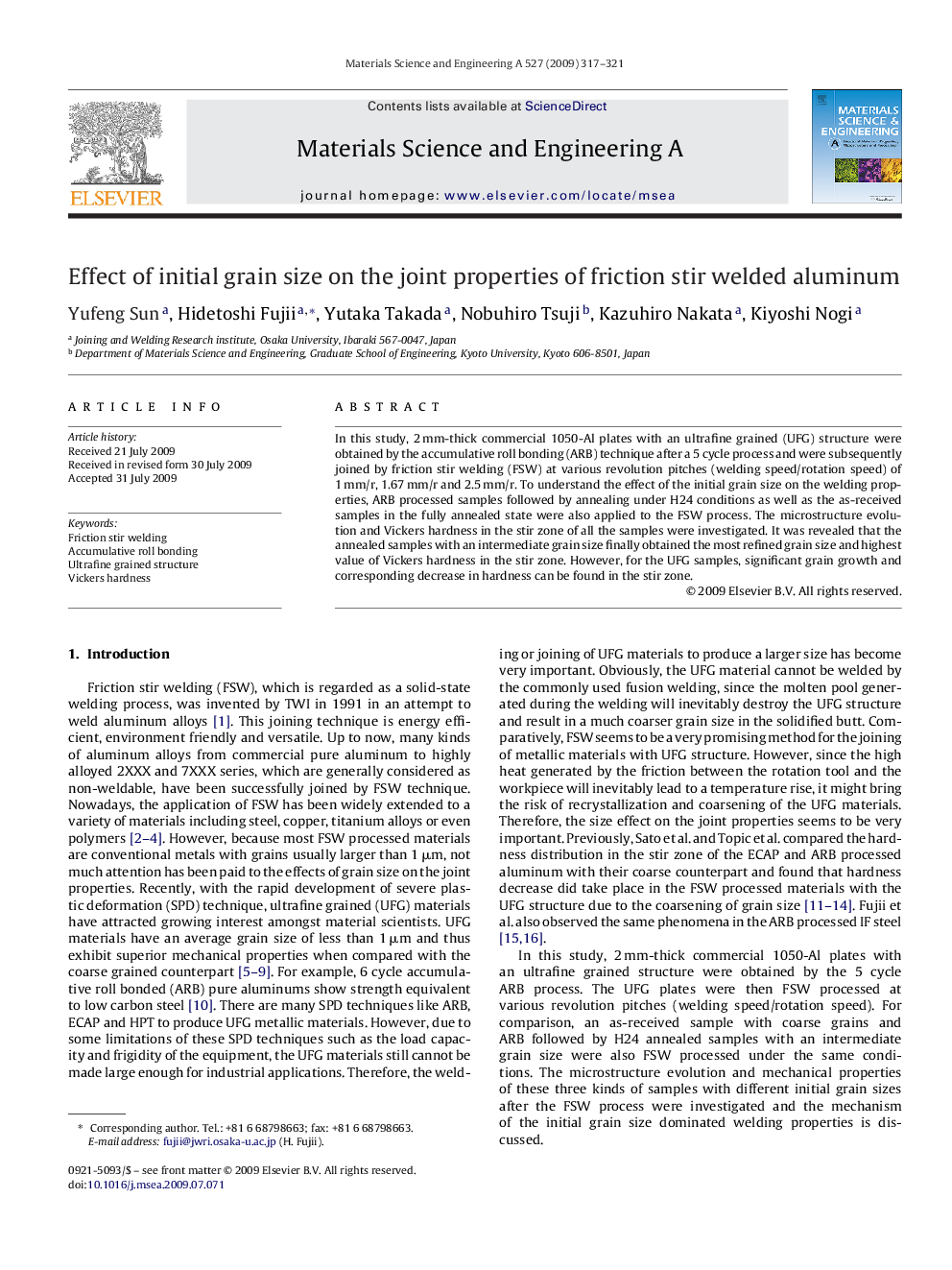| Article ID | Journal | Published Year | Pages | File Type |
|---|---|---|---|---|
| 1580278 | Materials Science and Engineering: A | 2009 | 5 Pages |
Abstract
In this study, 2Â mm-thick commercial 1050-Al plates with an ultrafine grained (UFG) structure were obtained by the accumulative roll bonding (ARB) technique after a 5 cycle process and were subsequently joined by friction stir welding (FSW) at various revolution pitches (welding speed/rotation speed) of 1Â mm/r, 1.67Â mm/r and 2.5Â mm/r. To understand the effect of the initial grain size on the welding properties, ARB processed samples followed by annealing under H24 conditions as well as the as-received samples in the fully annealed state were also applied to the FSW process. The microstructure evolution and Vickers hardness in the stir zone of all the samples were investigated. It was revealed that the annealed samples with an intermediate grain size finally obtained the most refined grain size and highest value of Vickers hardness in the stir zone. However, for the UFG samples, significant grain growth and corresponding decrease in hardness can be found in the stir zone.
Related Topics
Physical Sciences and Engineering
Materials Science
Materials Science (General)
Authors
Yufeng Sun, Hidetoshi Fujii, Yutaka Takada, Nobuhiro Tsuji, Kazuhiro Nakata, Kiyoshi Nogi,
